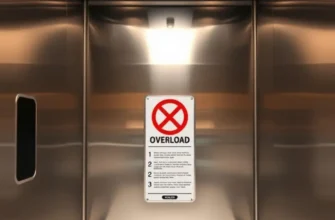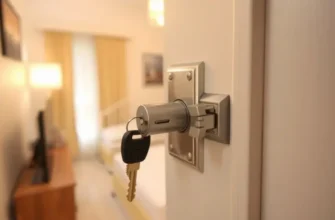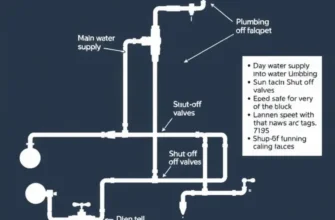Flooding can disrupt lives, especially for renters who may feel more vulnerable than homeowners in these situations. Knowing how to respond promptly and effectively can make all the difference in preserving both personal safety and property. This guide provides essential information on what to do if you encounter flooding in your apartment, from inspecting for leaks to safeguarding your belongings and ensuring a hassle-free cleanup. By prioritizing safety and security, you can navigate this stressful situation with confidence. While the idea of flooding can be daunting, awareness and preparedness are your strongest allies. This guide aims to equip you with practical tips and maintenance solutions tailored for apartment dwellers across the U.S. Whether it’s storm preparations or understanding tenant rights, taking action now will leave you feeling empowered if the unexpected occurs.
Safety First: Immediate Steps to Take

When your apartment starts to flood, immediate action is crucial for your safety and to minimize damage. First and foremost, prioritize your safety and that of any family members or pets. If water levels rise rapidly, leave the apartment immediately and find higher ground. Avoid walking through moving water; it only takes six inches of water to knock an adult off their feet.
Before taking action, assess the situation. Determine the source of the flooding, if it’s safe to do so without putting yourself in harm’s way. Check if the flooding is caused by external weather conditions or if it’s a plumbing failure within your unit. Knowing the source can help guide your next steps.
If you can safely access your electrical panel, turn off the electricity to avoid any risk of electrocution. Water and electricity don’t mix, and it’s essential to prevent electrical hazards. Never attempt to reach an active power source if the surrounding area is already flooded or if it’s unsafe to reach.
Next, focus on preserving your belongings. Move furniture, electronics, and important documents to higher ground if time permits. Utilize shelves or countertops, or consider another area of the building that remains dry. Remember, safety comes first, and saving property should be secondary to personal safety.
Once you’ve ensured personal safety, contact your landlord to report the issue as they may need to inform building maintenance or external repair services. Ensure you’re also informed about your insurance coverage. Tenant insurance is often essential for protecting your belongings in such events. Review what is covered and how to file a claim if necessary.
Consider creating a flood emergency kit if you live in an area prone to flood risks. Include practical items like waterproof containers for documents, non-perishable food, a flashlight with extra batteries, and necessary medications. Having this kit ready can ease the stress in urgent situations.
Additionally, verify your building’s emergency plan. Many buildings will have specific protocols during flooding or other emergencies; knowing these can provide more clarity and aid in a structured response.
Finally, keep informed about weather alerts or flood warnings through credible sources. By staying updated, you can better prepare and react promptly to prevent being trapped or unprepared during a flood.
These initial steps emphasize immediate safety and proactive measures to mitigate damage and risk. Balancing clear-headed decision-making with precautionary actions is key to handling apartment flooding effectively.
Long-term Solutions: Preventing Future Flooding

Preventing future flooding in your apartment involves a combination of proactive measures and continuous vigilance. While renters may have limited control over structural changes, there are still effective strategies to mitigate potential flooding risks.
First, conduct a comprehensive assessment of your apartment’s vulnerabilities. Identify low-lying areas, especially near windows and doors. Check for visible cracks or gaps where water can seep in during storms or heavy rain.
Installing removable barriers can be a practical preventive measure. Door dams or flood gates at entry points offer a formidable defense against incoming water. If these are not feasible, consider using weatherproof sealants around windows and doors to enhance their water resistance.
Regular maintenance is key to preventing flooding. Ensure all drainage systems, like nearby gutters and downspouts, are clear and functioning properly. This helps to direct rainwater away from the building, reducing the risk of overflow.
Renters can advocate for the installation of sump pumps in basement apartments to manage excess water efficiently. While these are typically the responsibility of the landlord, a clear discussion about benefits can often lead to improvements.
Investing in moisture sensors or water leak detectors offers early warnings of potential issues. These tech tools alert you via phone apps before a small leak becomes significant, allowing for timely interventions.
Additionally, be proactive in your communications with landlords or property managers. Draft detailed reports of any damp areas or previous flooding instances. This not only helps prioritize repairs but also establishes a documented trail that can be useful in advocacy for structural improvements.
Understanding local climate patterns is essential. If you live in an area prone to heavy rains, liaising with your landlord about enhancing landscape design can help in water diversion. Plant-driven solutions using native species can assist in absorbing excess groundwater, decreasing the flood burden on the building.
When considering longer-term strategies, renters should be financially prepared. Building an emergency fund helps address unexpected situations without undue stress. For more comprehensive coverage, review tenant insurance requirements. You can find additional details about insurance options and renter protections here.
Renters should stay informed about local government flood prevention courses or community programs. Participation not only equips you with the latest knowledge and preventive strategies but also enables networking with fellow renters facing similar challenges.
Ultimately, preventing future flooding in apartments combines immediate protective actions and a strategic approach to maintenance. Although it involves a certain investment of effort and resources, the peace of mind that comes with safeguarding your living space is invaluable.
Final words
Flooding in your apartment is a serious concern, but knowing how to handle it can simplify the process significantly. By prioritizing safety and acting swiftly, you protect yourself and your belongings from damages. Long-term strategies can ensure that your living space becomes more resilient against future flooding. Remember, staying informed, proactive, and ready for any possible mishap is the key to enjoyable and secure apartment living. Overall, knowing your responsibilities and rights as a renter can further empower you to handle any flooding crisis effectively.









